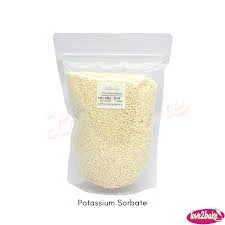
e 415 food additive
Understanding E415 The Food Additive in Our Diet
Food additives are substances added to food to enhance its flavor, appearance, or preservation. Among these substances, E415, commonly known as xanthan gum, is a widely used food additive that has gained popularity due to its unique properties and versatility. This article will explore what E415 is, its applications, safety considerations, and its impact on our diets.
Xanthan gum is a polysaccharide produced through the fermentation of sugar by the bacteria Xanthomonas campestris. This fermentation process imparts a thickening and stabilizing property to xanthan gum, making it an ideal ingredient for various food products. E415 is used primarily as a thickener, emulsifier, and stabilizer, which helps improve the texture and consistency of food.
Understanding E415 The Food Additive in Our Diet
Besides its role in emulsions, xanthan gum also serves as a thickening agent in gluten-free products. With the rising demand for gluten-free alternatives, E415 has become increasingly valuable. Gluten-free flours often lack the binding and structure provided by gluten, leading to products that can be crumbly or dry. Xanthan gum compensates for this by providing the necessary texture and moisture retention, allowing gluten-free bread, cakes, and pasta to achieve desirable qualities.
e 415 food additive

E415’s versatility extends beyond the food industry; it is also commonly used in personal care products and medicines. In skincare, xanthan gum acts as a thickener, stabilizer, and moisture-retaining agent. Its ability to create a desirable texture is beneficial in lotions, creams, and gels. In pharmaceuticals, xanthan gum is utilized to enhance the viscosity of liquid medications, ensuring a more uniform distribution of active ingredients.
When it comes to safety, xanthan gum is generally recognized as safe (GRAS) by food safety authorities around the world, including the U.S. Food and Drug Administration (FDA) and the European Food Safety Authority (EFSA). Studies have shown that xanthan gum is well-tolerated in humans, with minimal side effects. It is also gluten-free and suitable for vegans, making it a popular choice for individuals with dietary restrictions. However, consuming xanthan gum in large quantities can lead to digestive issues, such as bloating or gas, particularly in sensitive individuals.
Despite its safety, the presence of E415 in processed foods often raises questions about the health implications of additives in general. While xanthan gum offers texture and stability, it is essential to consume it as part of a balanced diet. Whole foods, such as fruits, vegetables, whole grains, and protein sources, should form the foundation of our diets. Processed foods containing additives like xanthan gum should be enjoyed in moderation.
In conclusion, E415, or xanthan gum, is a widely used food additive that plays a crucial role in enhancing the texture and stability of various food products. Its ability to act as a thickener, emulsifier, and stabilizer makes it a staple in the food industry, particularly for gluten-free products. With its safety affirmed by food authorities, xanthan gum can be enjoyed as part of a well-rounded diet. As consumers, it is essential to stay informed about the ingredients in our food and make choices that support our health and well-being.
-
Comprehensive Guide to Acetic Acid as Preservative: Benefits, Uses & Future TrendsNewsNov.24,2025
-
What Is a Food Additive? Global Insights, Applications & Future TrendsNewsNov.24,2025
-
968 Sweetener: The Modern Solution for Health-Conscious SweeteningNewsNov.23,2025
-
Discover the Benefits and Uses of 965 Sweetener (Erythritol) | Tenger ChemicalNewsNov.23,2025
-
961 Sweetener - A Next-Gen Sugar Alternative for Health and IndustryNewsNov.23,2025
-
Understanding 960 Sweetener: The Modern Sugar Alternative for Health and IndustryNewsNov.22,2025
-
Everything You Need to Know About 955 950 Sweeteners – Benefits, Uses, and TrendsNewsNov.22,2025
Hebei Tenger Chemical Technology Co., Ltd. focuses on the chemical industry and is committed to the export service of chemical raw materials.
-

view more DiethanolisopropanolamineIn the ever-growing field of chemical solutions, diethanolisopropanolamine (DEIPA) stands out as a versatile and important compound. Due to its unique chemical structure and properties, DEIPA is of interest to various industries including construction, personal care, and agriculture. -

view more TriisopropanolamineTriisopropanolamine (TIPA) alkanol amine substance, is a kind of alcohol amine compound with amino and alcohol hydroxyl, and because of its molecules contains both amino and hydroxyl. -

view more Tetramethyl Thiuram DisulfideTetramethyl thiuram disulfide, also known as TMTD, is a white to light-yellow powder with a distinct sulfur-like odor. It is soluble in organic solvents such as benzene, acetone, and ethyl acetate, making it highly versatile for use in different formulations. TMTD is known for its excellent vulcanization acceleration properties, which makes it a key ingredient in the production of rubber products. Additionally, it acts as an effective fungicide and bactericide, making it valuable in agricultural applications. Its high purity and stability ensure consistent performance, making it a preferred choice for manufacturers across various industries.





